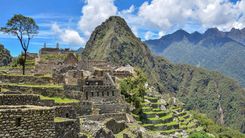Cordillera Huayhuash Circuit
The Cordillera Huayhuash Circuit is one of the more remote and demanding of Peru’s hikes. It loops around a compact mountain range that includes seven peaks over 19,700 feet (6,000 meters). The full circuit takes about 8–12 days and covers roughly 110 miles (177 kilometers), with high passes reaching up to 16,400 feet (5,000 meters).
You’ll need to be well-prepared—this isn’t a casual hike. The route takes you through rocky passes, quiet alpine valleys, and along lakes that sit right below snow-covered peaks. Yerupajá, Peru’s second-highest mountain, dominates much of the skyline. The trek is also known because of Touching the Void, which recounts a dramatic climbing accident on nearby Siula Grande.
Most people camp along the way, and each day brings a different kind of landscape. You won’t run into many other hikers, and services are minimal once you’re out there, so carrying your own gear or hiring pack animals is common. You’ll also want solid wilderness skills and good fitness—this trek is physically and mentally challenging.
How to get to Cordillera Huayhuash Circuit
First, make your way to Huaraz. Most people get there by taking an 8-hour bus from Lima, but there are also occasional flights into Anta, which is about an hour from town. Once in Huaraz (10,000 feet / 3,050 meters), it’s important to spend 3–4 days adjusting to the altitude before starting the trek.
From Huaraz, it’s another 4–5 hours by road to Llamac or Pocpa—small villages where the circuit usually begins. Many trekkers arrange transport, guides, and mule support through agencies based in Huaraz.
When to visit Cordillera Huayhuash Circuit
The dry season—May through September—is the best time to go. June to August tends to have the clearest skies, but nights get cold, often dropping below freezing. Avoid trekking here during the rainy season (October through April). The trail becomes much more dangerous due to flooded rivers, landslides, and snow covering the high passes.
















